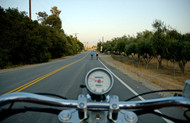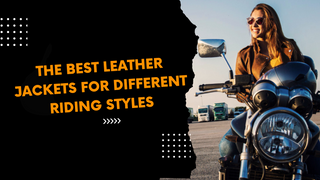Motorcycle 101: Seven Tips for New Riders
27th Feb 2015
Riding a motorcycle is a fun thing to do. It gives you that feeling of freedom that other types of vehicle won’t – specifically cars. However, we can’t deny the fact that travelling in a car is safer than riding a motorbike. According to a paper published by Centre for Accident Research & Road Safety – Queensland,motorcycle riders in Australia are 30 times more likely to be severely injured in road crashes than car occupants.
However, as mentioned on the same publication, “In all fatal motorbike accidents between 2006-2010 in Queensland, 7% of motorcyclist involved not wearing a helmet, 39% were speeding, and 30% were affected by alcohol or drugs”. Well, looking at the numbers, the risk of accidents or severe injuries will be significantly reduced by eliminating the contributing factors – not wearing safety gear, over-speeding and intoxication.
Based on these facts, motorcycles aren’t bad and they shouldn’t be avoided. Keep in mind that most motorbike enthusiasts are able to enjoy a lifetime of riding without any serious injury or accident – this is by applying safety practices. Safety practices that should be learned starting from the early days of being a rider:
1. Don’t Buy a Motorcycle that You Can’t Handle
Of course, we all know that there are lots of things that you need to know when buying a motorcycle. You’ll check on the engine power, size, height, colour, gas mileage and additional features. While you can get lost thinking of the considerations to make, don’t lose sight on one single most important thing – you’ll want a bike which your body can handle.
2. Get an ABS for Your Bike
An Anti-lock braking system, or ABS, is a proven life-saver. It is a safety system that allows the wheels of the motorcycle to maintain tractive contact with the road surface while the driver applies the brake. This prevents the wheels from locking up or ceasing rotation that can cause uncontrolled skidding. ABS is a now a standard for cruiser motorbikes from almost all manufacturers. However, you can always ask your dealership to make sure that this safety braking feature is present on your motorbike.
3. Get the Right Safety Gear
Needless to say, driving without a helmet and other safety gear is a risky thing to do. Without any protection, your body will take serious injuries if a crash occurs. So, do invest in high quality safety gear starting with a good helmet. It may not need to be of an expensive brand as long as it is approved and complies with Australian standard. In addition, you should get a set of sturdy clothing suitable for motorcycling. Always remember that wearing a plain t-shirt and a pair of jeans is a perfect recipe for a painful disaster when riding. To ensure protection, pick leather jackets paired with Kevlar pants. During summer or hotter days, you may also opt for textile jackets with vents and armour. Lastly, you would also want to get a pair of sturdy gloves and over-the-ankle footwear.
4. Polish Your Driving Skills
Of course, before you can drive a motorcycle, you should learn how to do so. If you opt to enrol for a driving class, make the most of the practical coaching provided by your instructor most especially the safety tips. On top of that, continue honing your skill in riding your motorcycle. Make sure that you can easily and safely handle most driving conditions at various speeds.
5. Learn How to Be Defensive on the Road
When driving a motorcycle, make sure to be protective at all times. You must be aware of the possible hazards and obstacles on the road. Pay attention on the danger traffic signs and follow them. Also, make sure to always watch over not only your speed but the speed of all vehicles around you. Be alert and keep a safe distance from them at all times. Most importantly, know how to effectively brake to avoid a collision.
6. Do Regular Maintenance
Make sure that your motorcycle is always in good shape. If possible, do a quarterly trip to your mechanic for routine check-ups. If there are needed repairs or maintenance jobs, have them done as soon as possible so you’re not at risk of breakdowns that may cause accidents. Also, every time you go for a ride, make it a habit to do a quick check-up on your motorbike to check if everything is okay.
7. Don’t Drive During Bad Weather
As much as possible, do not ride when it is raining. With poor visibility, reduced tire grip and slippery conditions, your margin for error is reduced significantly. If an unexpected rain catches you on the road, don’t hesitate to stop and take a shelter. If you really need to travel on motorcycle even if it’s raining, make sure to control your steering, brake and throttle to avoid sliding especially when cornering.
Following the tips that we have listed above are indeed important for beginners. However, even if you are an expert motorcycle rider, you should still follow all of these to ensure that you are always safe on the road.
Safety first! Be sure you have protective motorcycle clothing for men and women. Such as leather jackets, biker pants, helmets and more.






